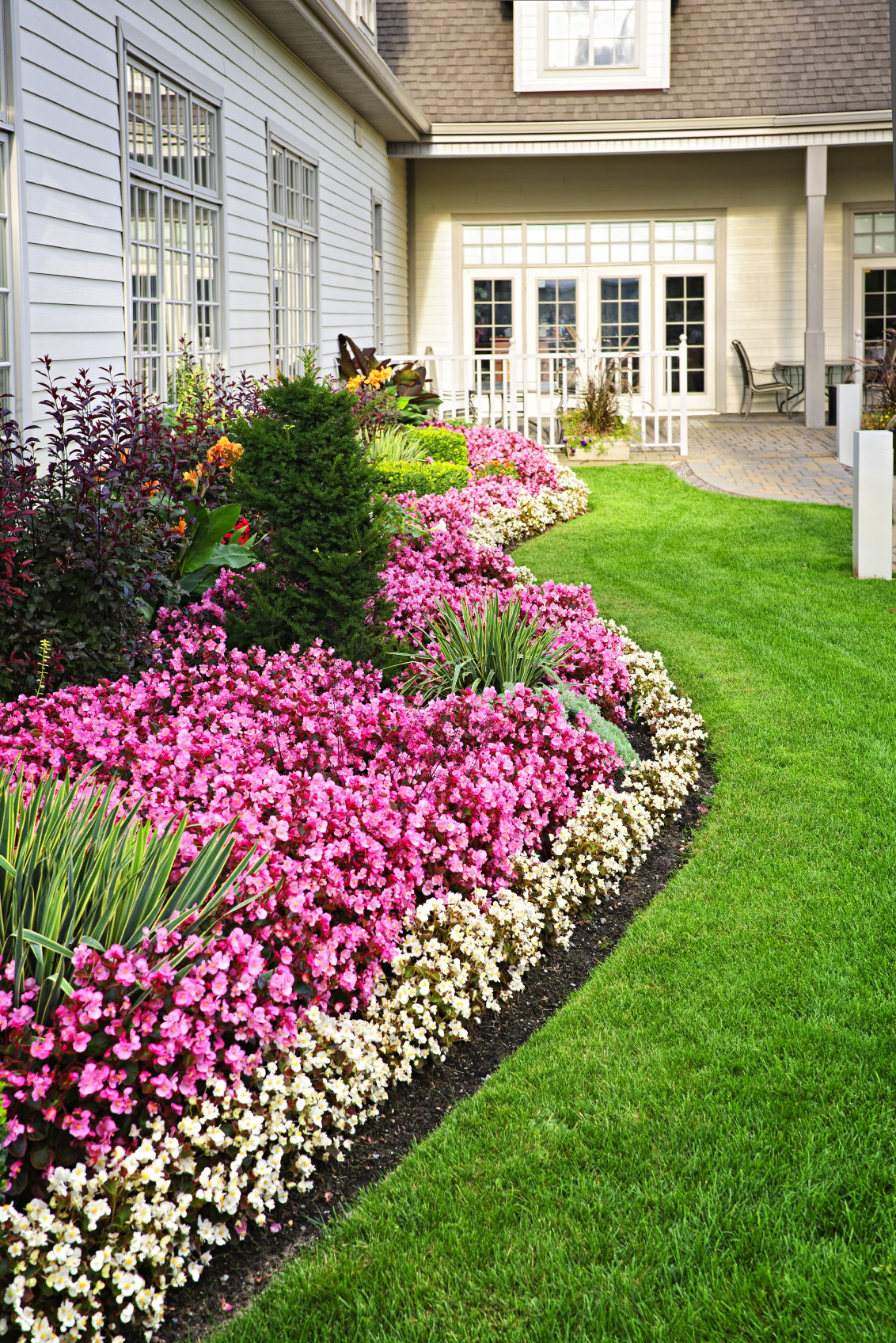Expert Landscaping Contractor Jacksonville: Changing Your Outdoor Areas
Expert Landscaping Contractor Jacksonville: Changing Your Outdoor Areas
Blog Article
Elevate Your Building's Visual With Sustainable Landscape Design Layouts and Eco-Friendly Practices
:max_bytes(150000):strip_icc()/landscaping-on-a-budget-2131962-hero-2c4072b220ee4bd5944c1a4fe816360e.jpg)
Benefits of Lasting Landscape Design
Executing lasting landscaping techniques not just conserves all-natural sources yet likewise promotes biodiversity and boosts general ecological health and wellness. One considerable advantage is the decrease of water consumption with the use of drought-resistant plants, rainfall gardens, and reliable watering systems.
Additionally, lasting landscape design can enhance dirt wellness by decreasing making use of chemical plant foods and chemicals, thereby developing a much healthier setting for plant growth and helpful dirt organisms. This, consequently, improves the overall strength of the landscape to hold up against ecological stress factors and climate modification influences - bush removal Jacksonville. Furthermore, lasting landscape design practices can attract varied wildlife, consisting of pollinators like bees and butterflies, promoting a more well balanced and dynamic community within the home
Incorporating Indigenous Plants
To build on the benefits of lasting landscape design, a tactical emphasis on incorporating native plants can even more boost environmental durability and promote biodiversity within the landscape. Native plants are species that naturally occur in a particular location and have evolved to thrive in the local environment, dirt problems, and ecological community. By including indigenous plants in landscape design styles, residential property owners can minimize water use, lessen the demand for chemical pesticides and plant foods, and support the regional wildlife populace.
Including indigenous plants also assists in maintaining the one-of-a-kind character and identification of an area's flora. These plants usually need much less upkeep once developed, making them a lasting and cost-efficient landscaping remedy over time. In addition, indigenous plants can attract native pollinators like butterflies and , adding to the overall wellness of the ecosystem.
When selecting indigenous plants for landscape design tasks, it is necessary to choose varieties that are appropriate to the particular environmental conditions of the site. Consulting with regional baby rooms or arboretums can supply important guidance on picking the appropriate indigenous plants for a certain location. By integrating native plants right into landscape design designs, homeowner can develop lovely, sustainable exterior rooms that benefit both the setting and the community.

Water Conservation Techniques
Effective irrigation approaches play an important function in lasting landscape design techniques, ensuring optimum water conservation initiatives in outdoor spaces. Implementing techniques such as drip irrigation, rainwater harvesting, and wise watering systems can significantly reduce water wastefulness while preserving a healthy landscape. Trickle watering delivers water straight to the origins of plants, reducing dissipation and runoff. Rainwater collecting entails gathering rainwater from roofings and keeping article it for later use in irrigation, decreasing the dependence on community water sources. Smart irrigation systems use weather data and dirt dampness levels to readjust watering timetables, protecting against overwatering and advertising water effectiveness.
Along with innovative watering approaches, xeriscaping is one more water-saving landscaping technique that concentrates on utilizing drought-resistant plants, mulch, and efficient watering to develop a low-water landscape style - landscaping companies Jacksonville. By picking indigenous plants that are appropriate to the local environment and soil conditions, homeowner can lower the requirement for extreme pop over here watering, ultimately preserving water and advertising a sustainable outside environment
Eco-Friendly Hardscaping Ideas
Enhancing outside spaces with green hardscaping features can add considerably to sustainable landscape design methods. Decide for materials like redeemed timber, recycled concrete, or natural stone to reduce environmental impact when considering hardscaping elements. These products not only add an one-of-a-kind visual interest your exterior room yet also decrease the need for brand-new sources extraction.
Carrying out permeable paving options such as crushed rock or absorptive concrete can assist reduce water runoff and advertise groundwater recharge. These choices enable rainwater to seep into the ground, avoiding disintegration and minimizing the burden on stormwater systems.
Integrating indigenous plants right into hardscaping designs can additionally boost eco-friendliness by sustaining neighborhood wildlife and lowering the need for too much watering or chemical therapies. By integrating eco-friendly wall surfaces or upright gardens, you can present a lot more plants into urban setups, enhancing air high quality and biodiversity.
Incorporating energy-efficient lighting, such as solar-powered LEDs, right into hardscaping styles can lower power intake and lower your home's carbon impact. Prioritizing eco-friendly hardscaping concepts not only boosts the beauty of your exterior area yet likewise demonstrates a dedication to environmental stewardship.
Upkeep Tips for Sustainable Landscapes

Frequently prune plants look at more info to advertise healthy development and prevent overgrowth that can lead to pest conditions or infestations. Use natural plant foods to nourish the soil and plants without damaging chemicals that can leach right into the setting.
Verdict
In final thought, sustainable landscaping practices offer numerous advantages for homeowner, from improving the aesthetic appeal of the surroundings to promoting environmental conservation. By including indigenous plants, applying water preservation methods, and using green hardscaping concepts, homeowner can develop attractive landscapes that are also eco responsible. With appropriate maintenance, sustainable landscapes can grow and contribute to a much healthier ecological community for both people and wild animals.
Moreover, sustainable landscaping can improve dirt health and wellness by lessening the usage of chemical fertilizers and chemicals, consequently developing a healthier environment for plant growth and useful soil microorganisms.To construct upon the advantages of sustainable landscape design, a critical focus on incorporating native plants can better improve environmental resilience and advertise biodiversity within the landscape. By including indigenous plants in landscape design styles, building owners can reduce water usage, minimize the demand for chemical pesticides and plant foods, and sustain the local wild animals populace.
These plants typically call for less maintenance once established, making them a lasting and cost-effective landscaping service in the lengthy run. By incorporating indigenous plants right into landscape design designs, property owners can create lovely, lasting exterior spaces that profit both the setting and the area.
Report this page